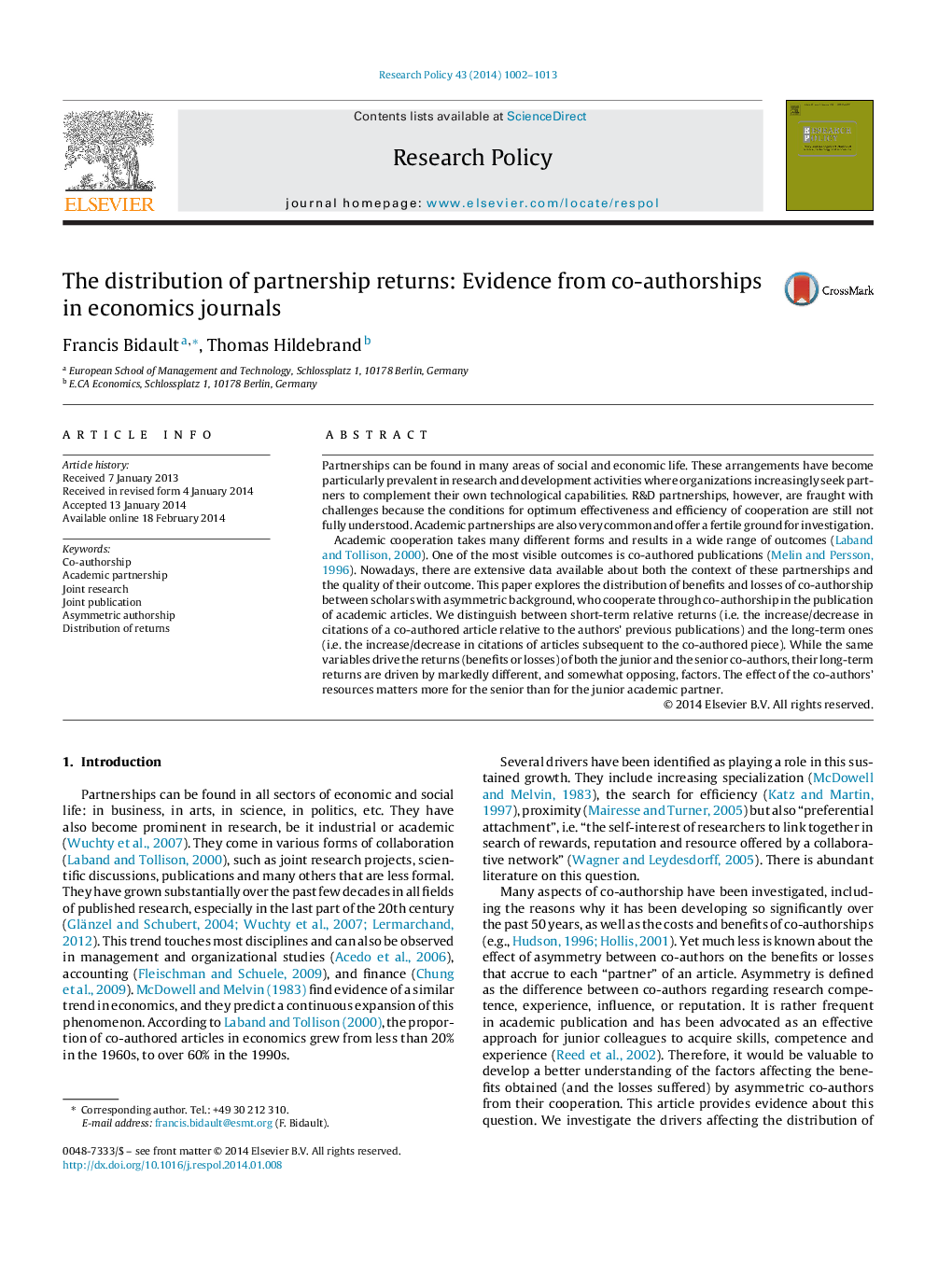| Article ID | Journal | Published Year | Pages | File Type |
|---|---|---|---|---|
| 10482959 | Research Policy | 2014 | 12 Pages |
Abstract
Academic cooperation takes many different forms and results in a wide range of outcomes (Laband and Tollison, 2000). One of the most visible outcomes is co-authored publications (Melin and Persson, 1996). Nowadays, there are extensive data available about both the context of these partnerships and the quality of their outcome. This paper explores the distribution of benefits and losses of co-authorship between scholars with asymmetric background, who cooperate through co-authorship in the publication of academic articles. We distinguish between short-term relative returns (i.e. the increase/decrease in citations of a co-authored article relative to the authors' previous publications) and the long-term ones (i.e. the increase/decrease in citations of articles subsequent to the co-authored piece). While the same variables drive the returns (benefits or losses) of both the junior and the senior co-authors, their long-term returns are driven by markedly different, and somewhat opposing, factors. The effect of the co-authors' resources matters more for the senior than for the junior academic partner.
Keywords
Related Topics
Social Sciences and Humanities
Business, Management and Accounting
Business and International Management
Authors
Francis Bidault, Thomas Hildebrand,
